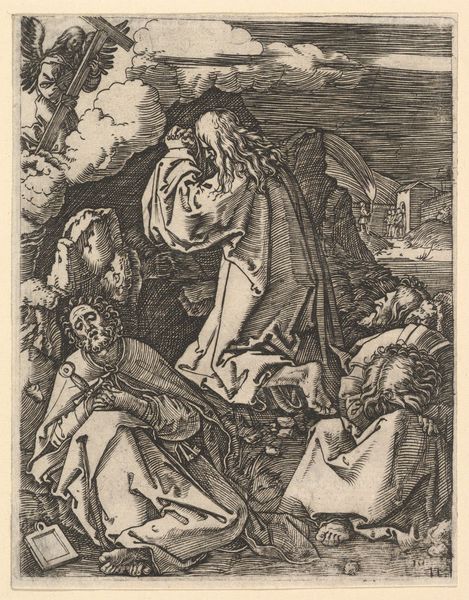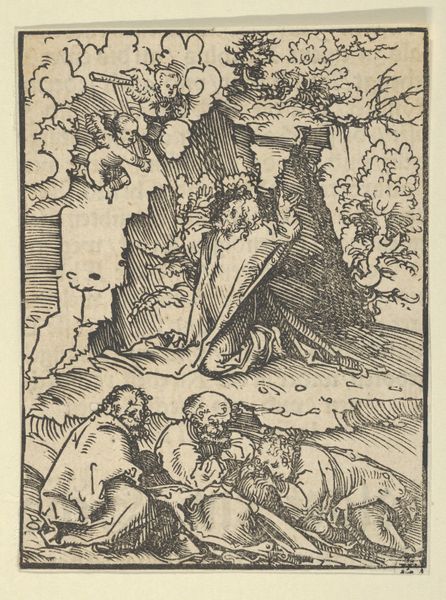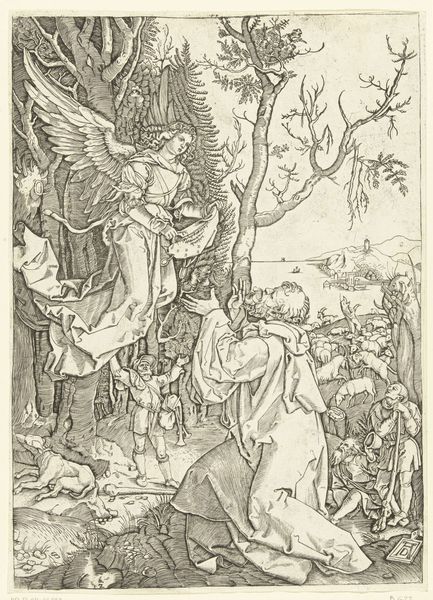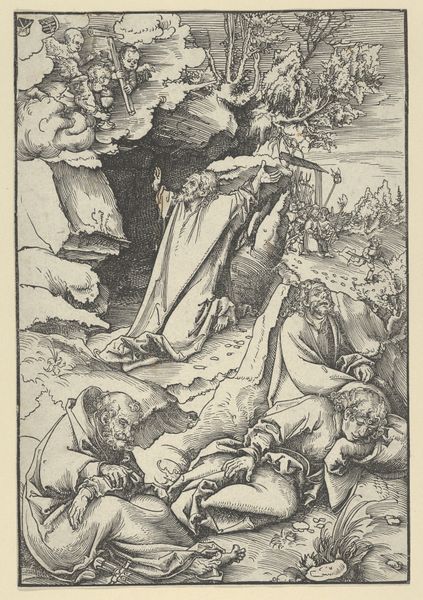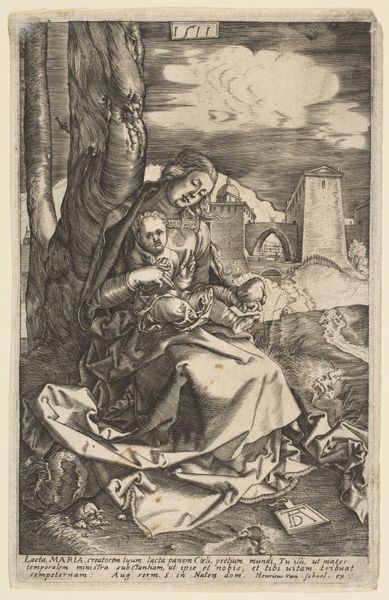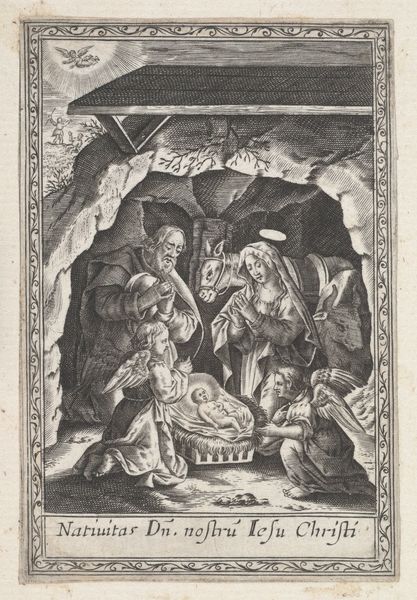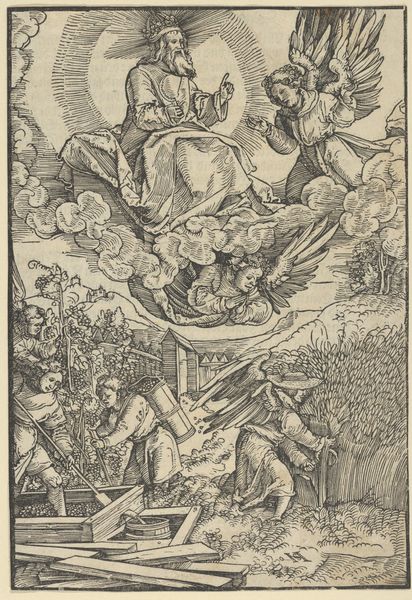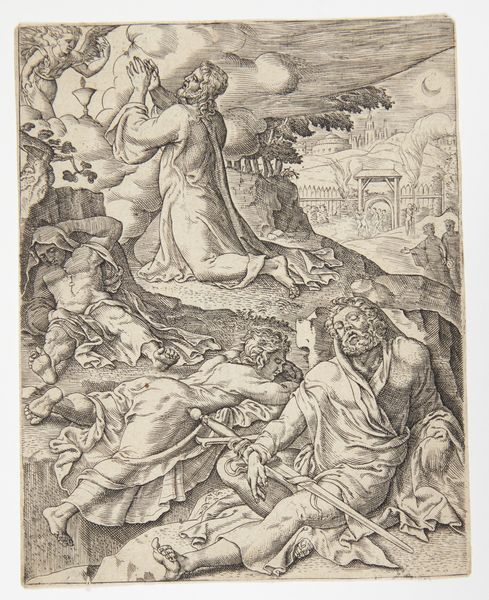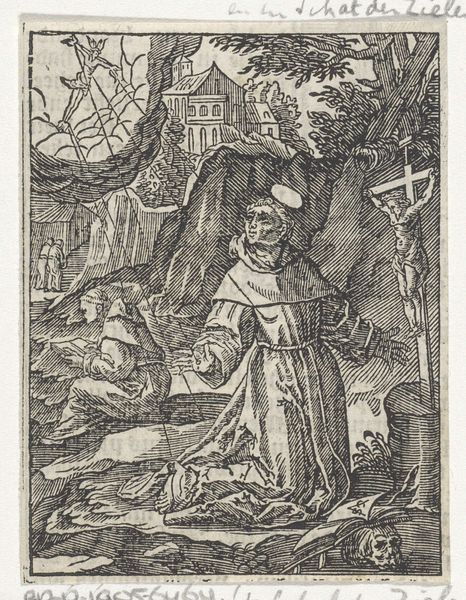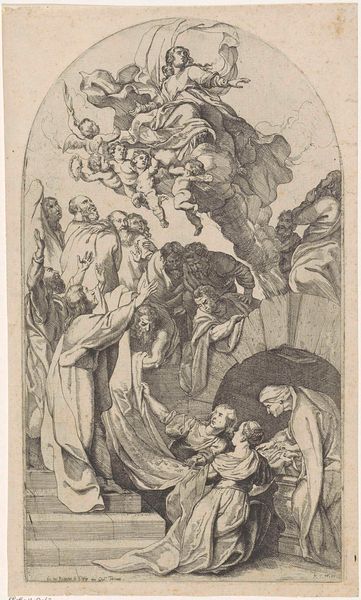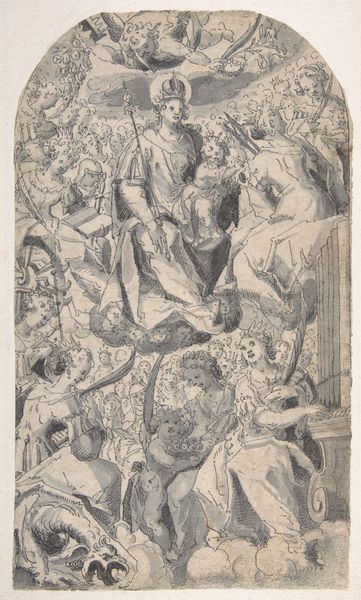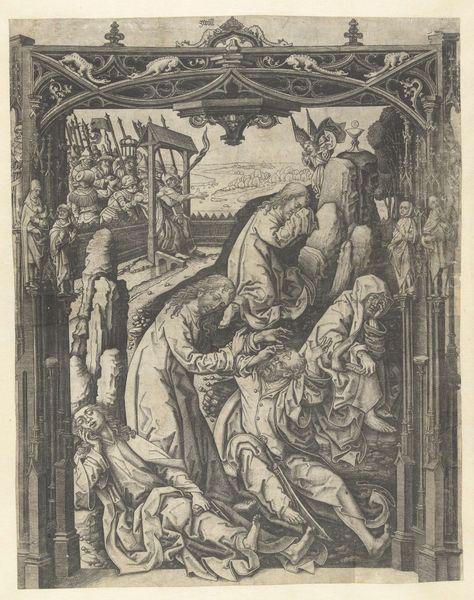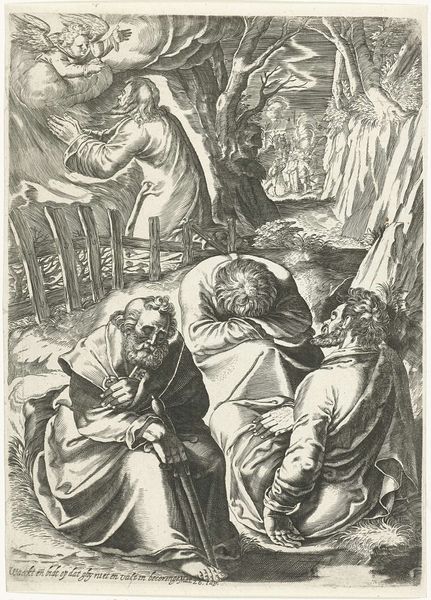
drawing, print, woodcut, engraving
#
drawing
# print
#
figuration
#
woodcut
#
history-painting
#
northern-renaissance
#
engraving
Dimensions: For the whole series: plate circa : 5 x 3 13/16 in. (12.7 x 9.7 cm)
Copyright: Public Domain
Curator: What strikes me immediately is the stark emotionality rendered through line work; the artist masterfully conveys a sense of impending doom and somber spirituality. Editor: And the materiality, specifically the laborious nature of engraving to achieve such density and texture, further intensifies that sensation. We are looking at "Engraved copies of The Little Passion," a collection dating from 1485 to 1699 and attributed to Albrecht Dürer, now residing here at the Met. Curator: Indeed, Dürer's mastery of the burin is on full display. Note the strategic deployment of hatching and cross-hatching, creating a chiaroscuro effect despite the monochromatic medium. The varying densities give spatial depth to the planes. Editor: Thinking about labor—imagine the repetitive, demanding handwork in executing thousands of such tiny lines on a metal plate. It reminds us that these weren't spontaneous sketches; they are a product of dedication and a commercial system where the image could be multiplied and widely distributed, a new level of mass production. Curator: I appreciate your pointing out the mass production, but let’s not overlook the symbolic weight that comes from this northern-renaissance visual tradition. Consider the angel’s presence – it functions as more than just an ornamental device but rather as a compositional focal point whose gaze dictates where ours will land within its overall design. Editor: However, isn’t that angelic presence a bit… stylized? It reads almost like a component in the manufacturing process, each part meticulously crafted within a reproducible framework—angels alongside meticulously drawn robes each conforming a social hierarchy made more real through craft. Curator: That framework allows Dürer to investigate, to visually render this profound moment of Christ’s Agony in the Garden – capturing simultaneously the humanity, its pathos alongside the promise for what it heralds. The artwork successfully uses linear patterns which creates unity and is compelling within it’s representational subject, thus revealing beauty despite its dark context. Editor: Precisely. The value comes not just the end result but as a physical artifact, something produced out a specific historical labor—these engravings as emblems of broader socio-economic transformations enabled thanks labor divisions coupled aesthetic outcomes during and proceeding the Reformation in sixteenth century Europe. Curator: Thinking now about its linear expression with how emotional narratives intertwine, I realize here lies what can be viewed through purely art formal language - or analyzed deeply through materialistic readings, with meaning beyond face value. Editor: A reminder of how artworks always encapsulate layers—crafted intention, material reality—continuing a life of interpretation for viewers such ourselves here.
Comments
No comments
Be the first to comment and join the conversation on the ultimate creative platform.
